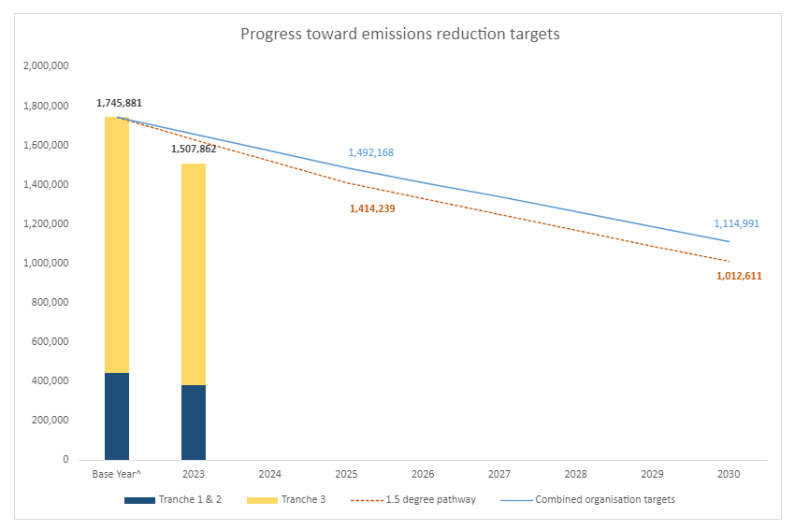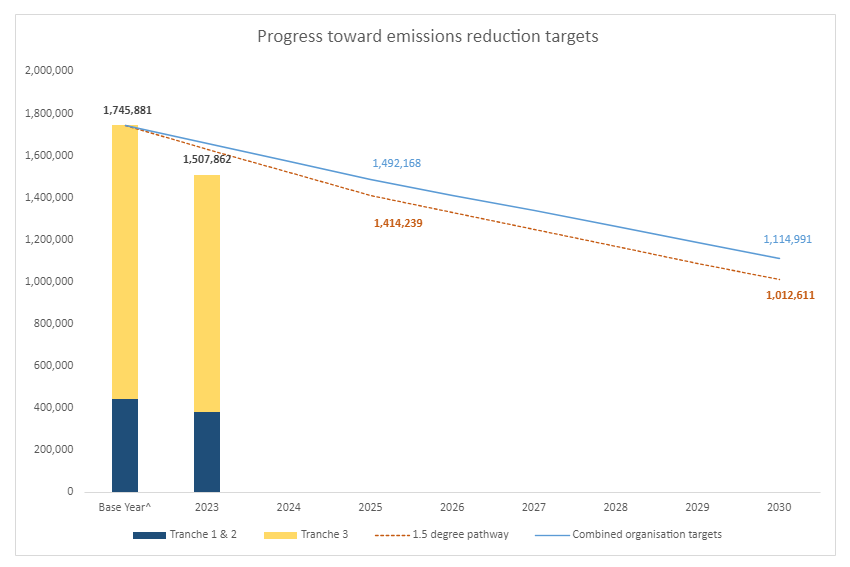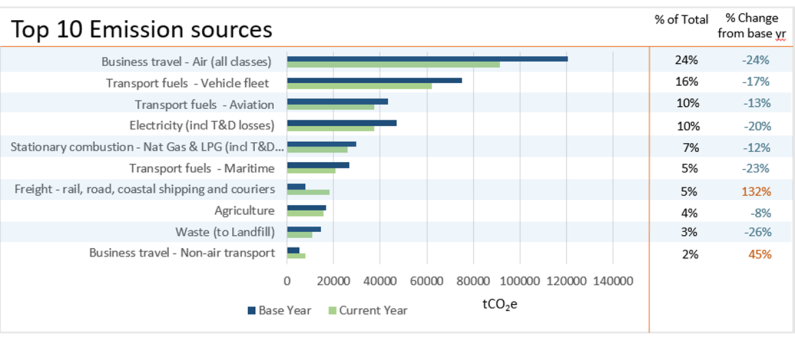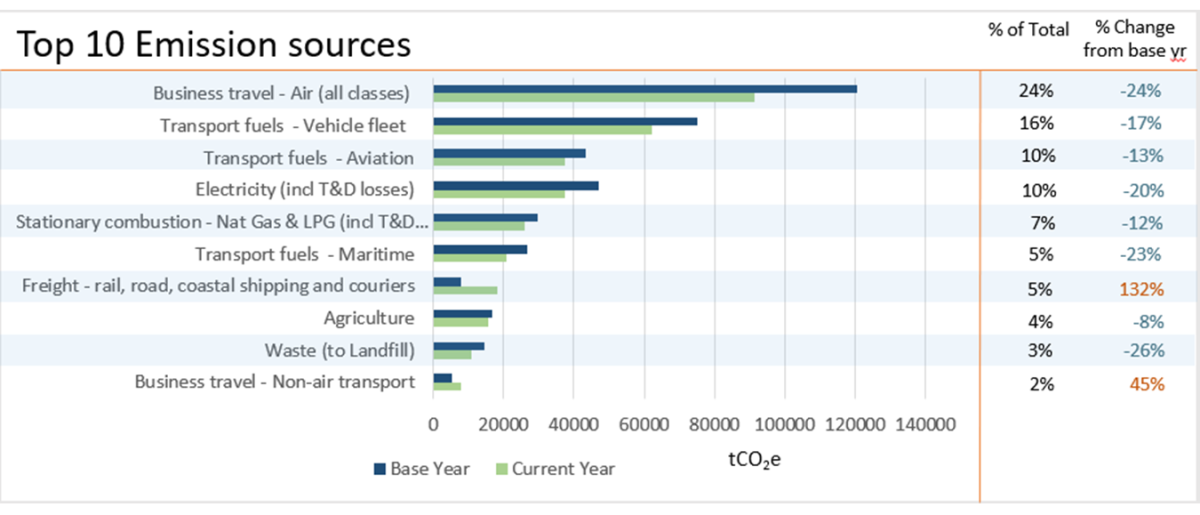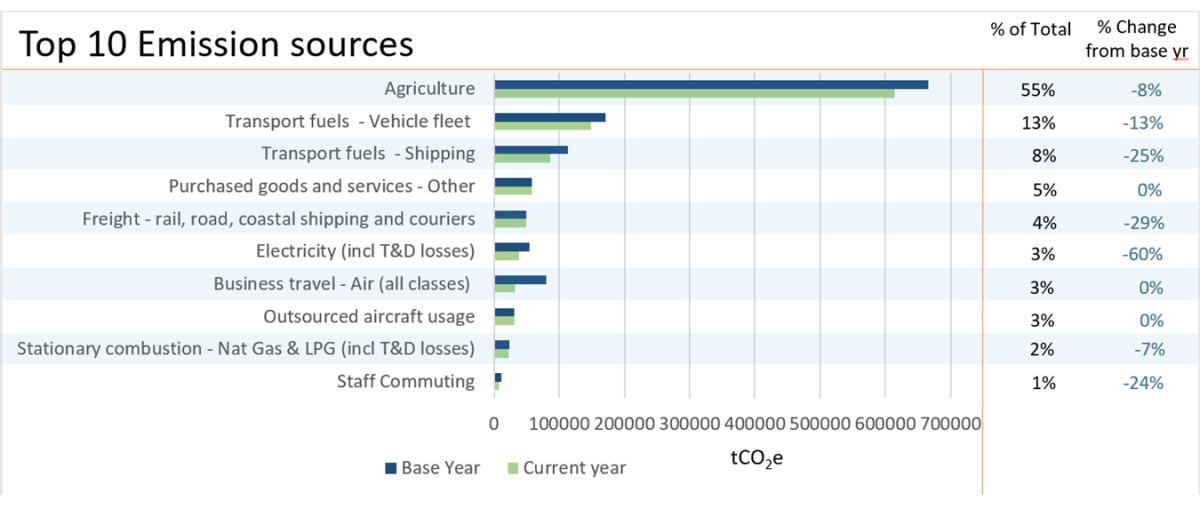Air travel
Air travel accounted for 8% of 2023 reported emissions across all tranches. This includes any travel on a commercial plane such as for overseas diplomacy, site visits, and community engagement and consultation (organisation-controlled aircraft, such as NZDF planes, are counted separately).
Across the programme, air travel emissions reduced 38% since base year. Air travel is still one of the highest emission sources for a majority of CNGP participants, and many organisations are looking at further opportunities for reductions.
To date, 29 organisations have implemented policy changes toward minimising air travel. A further 14 organisations reported they plan to implement travel policy changes in 2024.
Fleet
Fourteen percent of 2023 reported emissions across all tranches were from vehicle fleet. This includes light and heavy vehicles and covers all travel undertaken in CNGP participant-owned fleet vehicles.
Fleet emissions reduced 14% from Base Year, in part due to the transition to electric vehicles.
EV dashboard reducing government fleet emissions [New Zealand Government Procurement]
Electricity
Five percent of 2023 reported emissions across all tranches were from electricity. This covers activities such as heating and lighting.
Electricity emissions have reduced by 25% (25,336 tCO2-e) across the programme. This reduction is supported by lower emission factors for electricity due to an increased renewable component of the New Zealand electricity grid. Electricity consumption across the programme has also reduced by 10% (80 GWh), reflecting efforts to reduce building energy use.
See further information on Reducing emissions in government office buildings [New Zealand Government Procurement]
Coal boilers
The Government has committed to phasing out the largest and most active coal boilers by the end of 2025. Twenty-three out of 24 projects are on track to be completed by end of 2025.
As of February 2024, 101 of 149 coal boilers in schools have been replaced.
Agriculture
Agriculture is the largest overall emission source at 42% of programme emissions. 97% of this is from the Tranche 3 organisation Pāmu, that manages nearly 360,000 ha of land around New Zealand. Agricultural emissions have dropped 8% since Base Year.
Supply Chain emissions
In addition to the mandatory programme emission sources, CNGP participants are encouraged to measure, report, and set appropriate targets for their Scope 3 value chain emissions. Alternative targets are permitted, reflecting the sometimes-limited influence organisations have over these sources. In 2023, 2,208,086 tCO2-e was reported under this category:
- Fifty-one percent of this was from the state schooling sector, predominantly from staff and student commuting, and purchased goods and services.
- Twenty-six percent was from Kāinga Ora, from housing construction and associated activities.
- Fifteen percent was from the New Zealand Transport Agency, from state highway infrastructure construction, maintenance and operations, and emergency works.
This is an important part of the programme where emission reduction initiatives by government can influence the wider economy and support the provision of lower emission goods and services across a wide range of industries.

